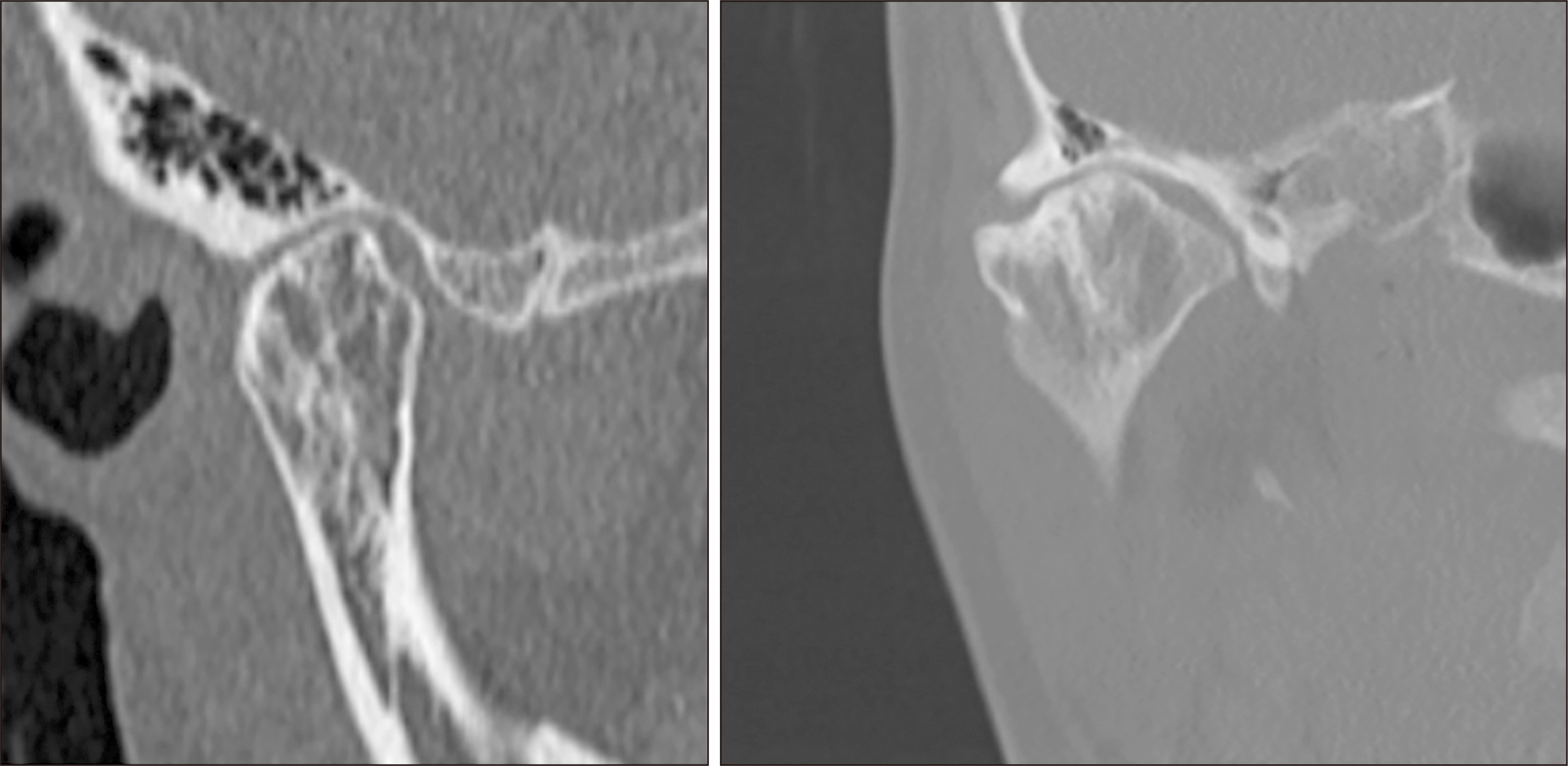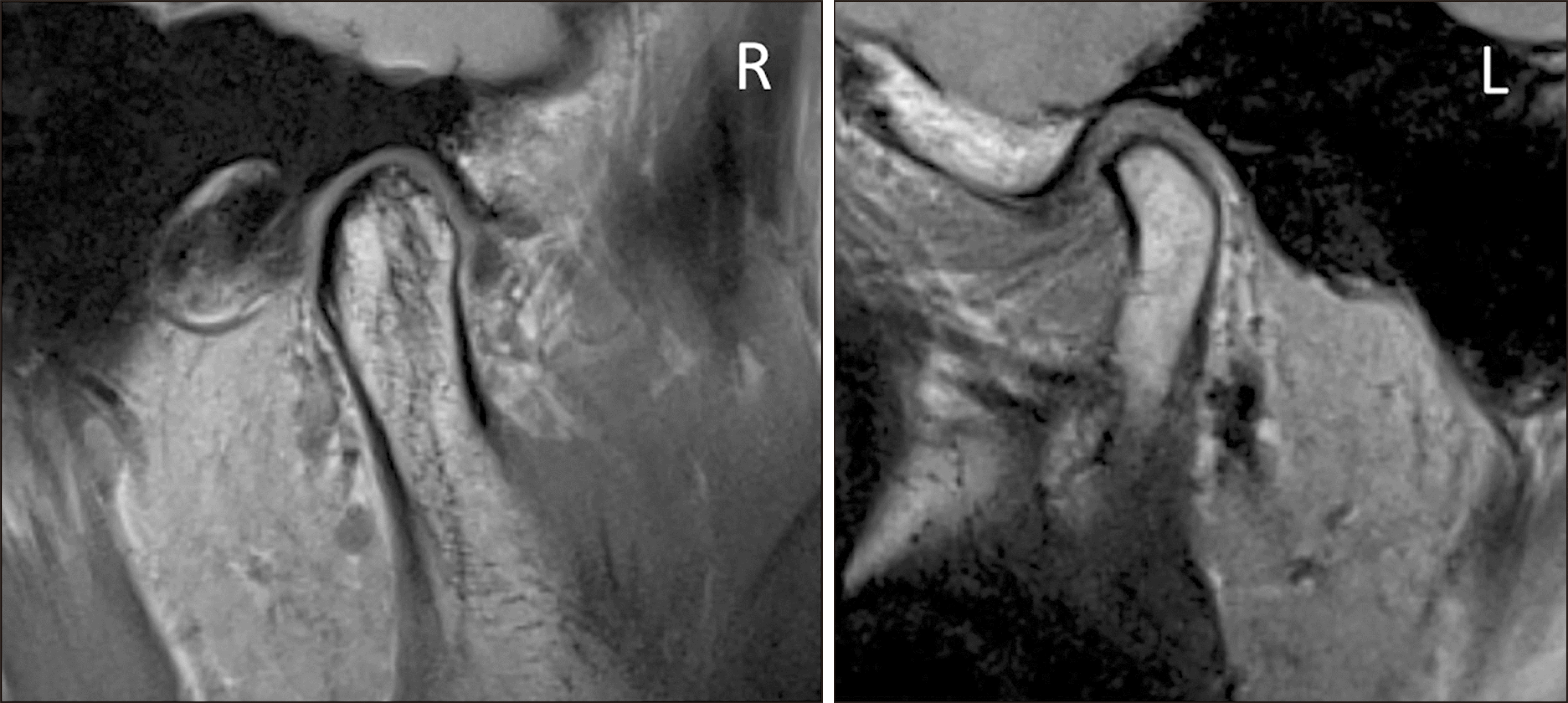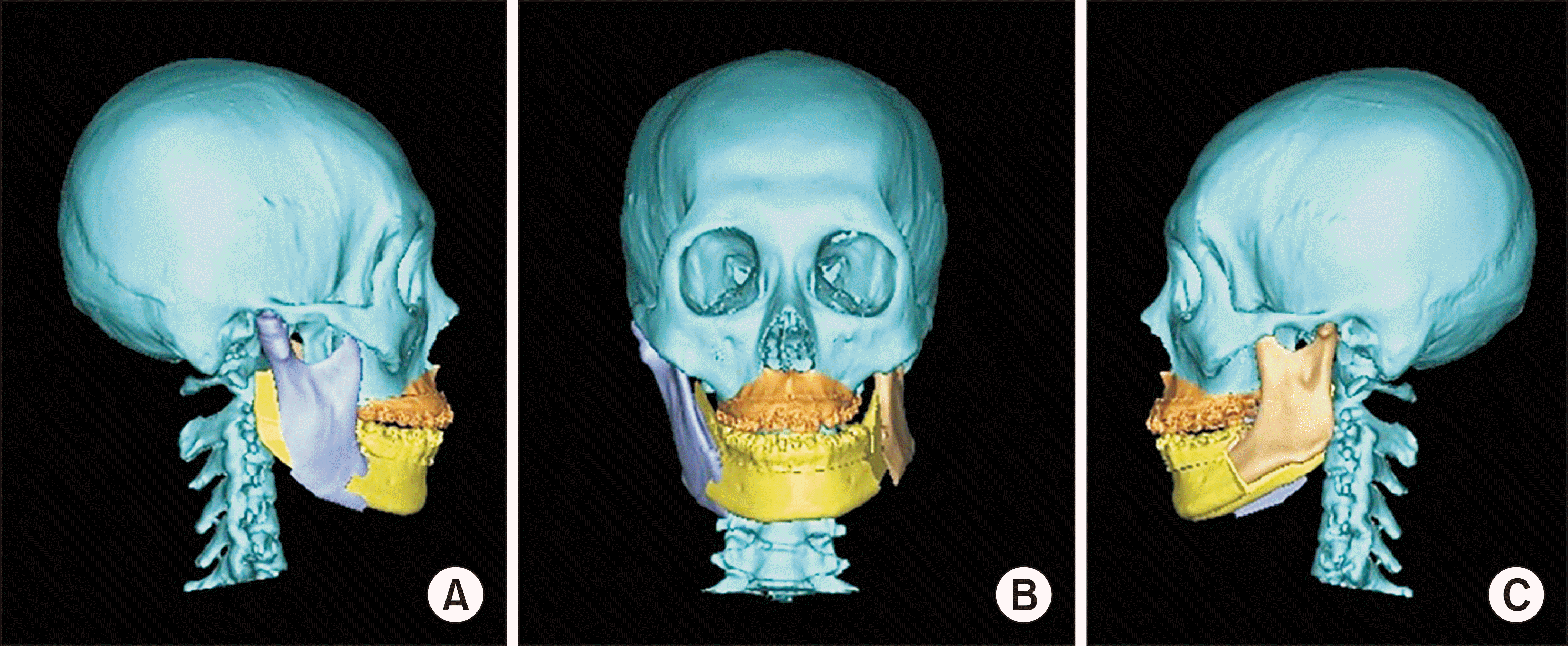I. Introduction
II. Case Report
 | Fig. 2A, B. Cephalometric radiographs. C. Panoramic radiograph image. D. Cephalometric template analysis. (CDS: craniofacial drawing standards, Ave: average) |
 | Fig. 6Intraoperative photographs. A. The joint capsule was exposed by a preauricular incision to perform condylectomy. B. Resected mandibular head lesion. C. The osteotomy design was step-type and subspinal, and the procedure was performed using a reciprocating saw. The surgeon then moved the osteotomes toward the lateral nasal wall and pterygomaxillary junction to obtain the final maxillary down-fracture. The maxilla was then stabilized utilizing a titanium miniplate. A medial osteotomy cut was made at the level of the lingula and parallel with the occlusal plane using a fissure burr with consecutive cuts performed medial to the external oblique ridge. A buccal cut was performed vertically from the distal portion of the second molar to the inferior border of the mandible. Fragments were separated using a thin osteotome and forceps. After confirmation of a complete mandibular split, an acrylic occlusal splint was used to position the distal segment. The fragments were then stabilized utilizing a titanium miniplate. |
 | Fig. 8A. Leveling of upper dentition begun, 24 days after orthognathic surgery. B. Leveling of upper dentition continued, 1.7 months after orthognathic surgery. C. Class II elastics were used for correction of Class II denture, 2.7 months after orthognathic surgery. D. Class II elastics continued, 3.8 months after orthognathic surgery. E. Closing space of upper dentition, 5.1 months after orthognathic surgery. F. Detailing and finishing, 6.8 months after orthognathic surgery. |




 PDF
PDF Citation
Citation Print
Print










 XML Download
XML Download